It is the largest stone building in Iran after Persepolis, which is located in the city of Kangavar in Kermanshah province, on the historic Hegmataneh-Biston-Ctesiphon road. Anahita Temple in Kangavar is the most famous temple of Anahita in Iran.
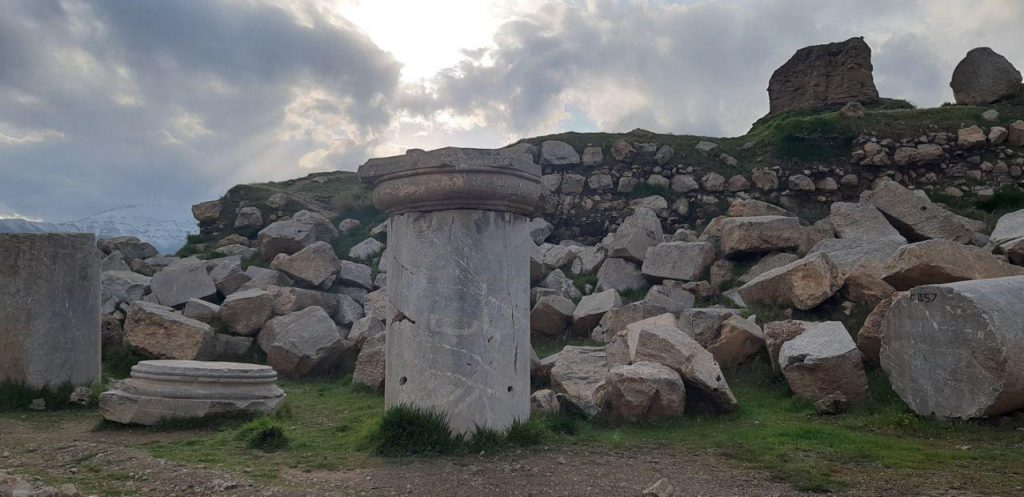
History of Anahita Temple
To the ancient Iranians, Anahita was considered the guardian of water, an angel of abundance, beauty, and fertility, and enjoyed a very high status and rank. Anahita Temple was used to praising and honoring the goddess of water in ancient Iran. according to historical documents, dates back to prehistoric times.
According to historical writings and documents, it seems that the first cornerstone of this temple was built in the Achaemenid era and its construction continued until later periods and was completed during the Sassanid period. Some other researchers have introduced this building as an unfinished palace for Khosro Parviz.
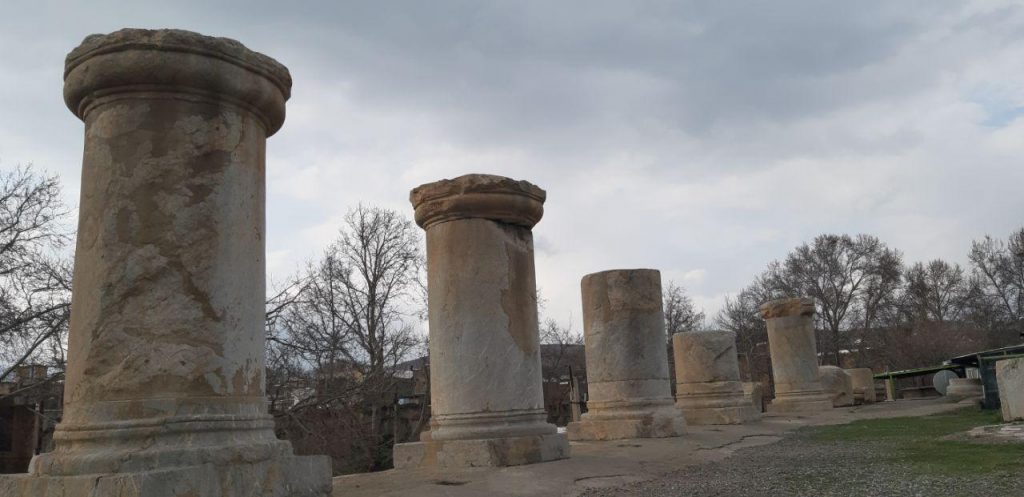
There are various opinions on the architectural style of Anahita Temple by European and Iranian archaeologists. According to some European archaeologists, the Anahita monument was built in the Greek style and they believe that during the Achaemenid and Parthian rule, cultural exchanges took place between Iran and Greece, based on which Greek architectural structures were built in Iran and the city. Kangavar is also one of the cities that has been most influenced by the Greek architectural style due to its location in the border areas of western Iran.
But Iranian scholars and archaeologists reject this theory of the modeling of the architecture of the Anahita Temple from Greek architecture, arguing for differences between the styles used in the architecture of the Anahita Temple and Greek architecture
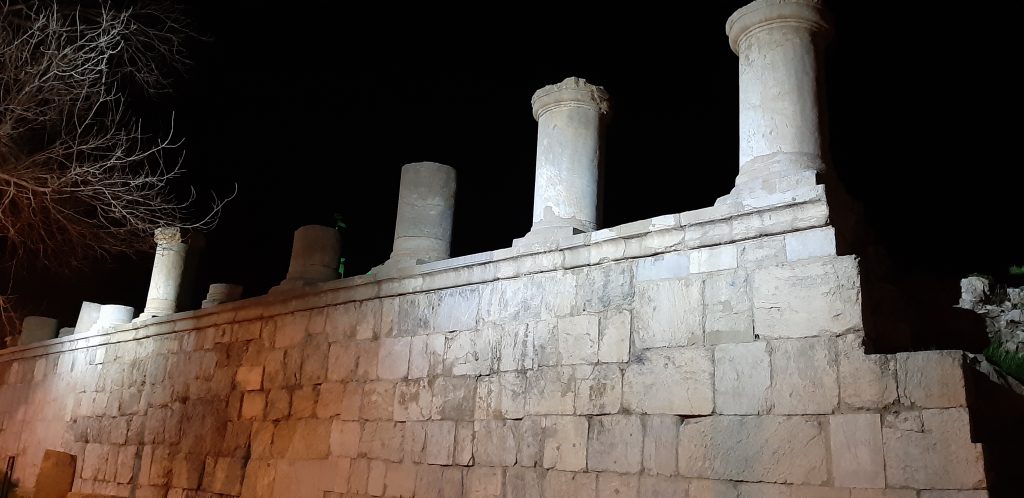
The architecture of this Temple
The Anahita Temple is based on the method of paving, which was built on the plain of Iran, and in later periods, important temple buildings and some government buildings were built on the platform, such as Persepolis.
Above this monument is a row of stone pillars. The entrance is built by a two-way staircase on the south front, which is 30 meters long. And on the northeast front, one-way stairs have made it possible to access this place.
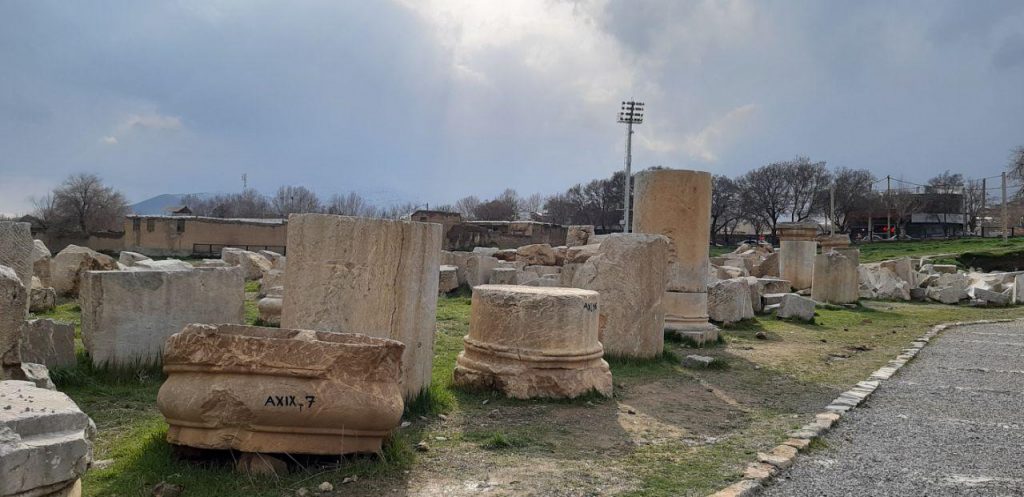
The Temple of Anahita has no idols or statues, and only mental representations of Anahita are considered. The columns were simple, without special architectural decorations, short and thick in a row.
The rocky outcrops measured the river and led it majestically to the middle of the Anahita Temple. The type of water distribution and water flow inside the Anahita Temple is one of the engineering wonders of the time to display this sacred element in the most beautiful way possible.
The temple’s nearby mines were used to extract stone, and now the semi-carved stones between the column and the facade stones on the mine surfaces have survived.
This building is built on a natural hill with a maximum height of 32 meters relative to the surrounding land. In the northwest corner of this building, there is an Imamzadeh and a mosque.
The activity of this Temple
There are different theories about the use of this building; Some believe that this building is only for hunting and entertainment, and others call it “Deskereh” and say that the kings received a few of their guests in this place, and of course, it was sometimes used for fun and hunting; Like the Jabaliyah of Kerman, Haruniyeh Toos and Khajeh Rabi of Mashhad.
Due to the long history of Anahita Temple and the encounter of this huge historical monument with natural disasters or human destruction that has been done inadvertently or intentionally, this building has been severely damaged.
Other tourist attractions in Kangavar
Other tourist attractions in the historical city of Kangavar include the historical house of Sari Aslani, Judah Hill, Godin hill which is one of the first human habitats in Iran, the Kooche (alley) Bridge, Imamzadeh Mosque, Kangavar Mosque, Kangavar has some ancient beautiful bath, called Tavakkol Bath, Bozorg (Grand) Bath, Kohne Bath, etc. Also, Kangavar has beautiful and pleasant nature, which can be referred to as the village and the mirage of fash and Maran mirage.
Kangavar is the easternmost city of Kermanshah province, and if you plan to travel to Kermanshah by road and from the east and center of Iran, you will pass through this city before reaching Kermanshah so do not forget to visit Anahita Temple and the other tourist attractions of Kangavar.

Where to eat near Anahita Temple
You can go to Dure Hami restaurant to eat in Kangavar and Gap Cafe is a good choice for spending time in this city cafe.
For buying souvenirs, can also go to the historical bazaar of Kangavar.

Where to stay near Anahita Temple
To stay in Kangavar, you can use a residence, which is located in the village of Fash near Kangavar, There is also the residence of a tambourine workshop, which is one of the instruments of Kurdish folk music, which travelers can visit and spend pleasant moments.

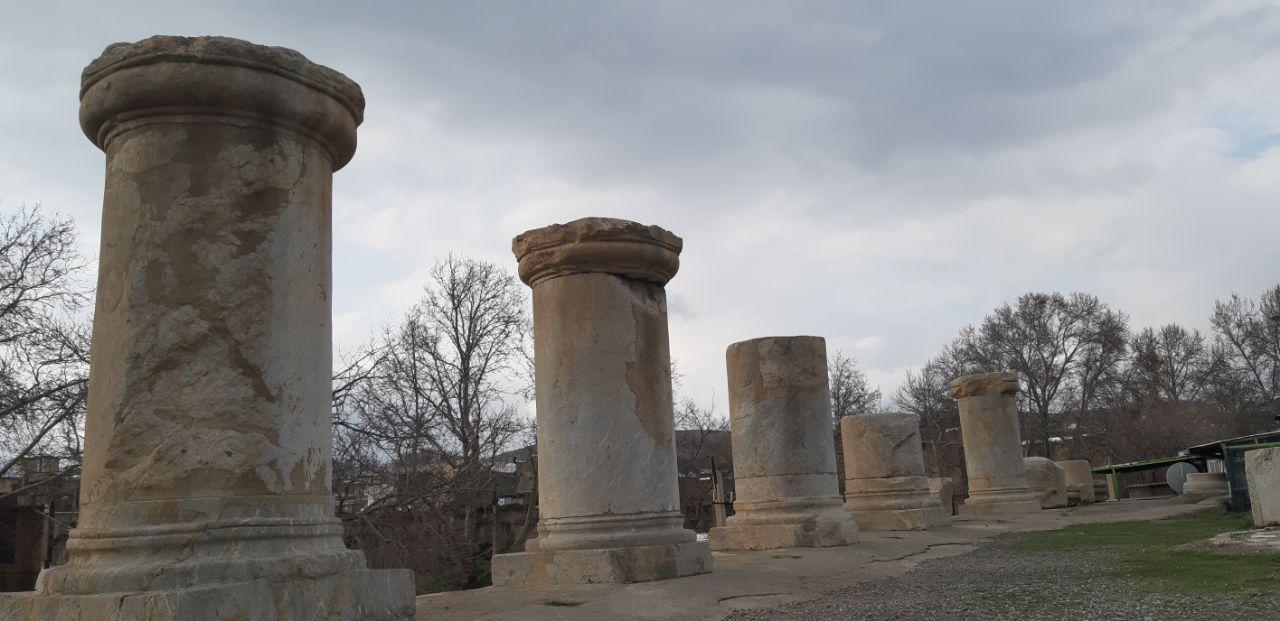
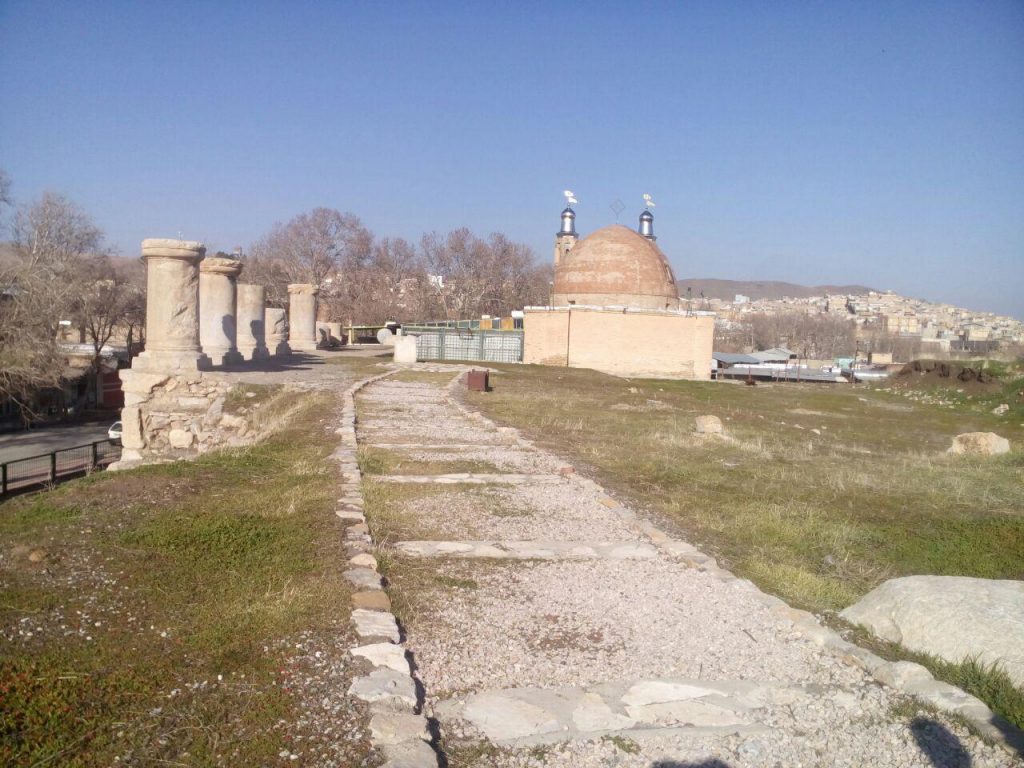

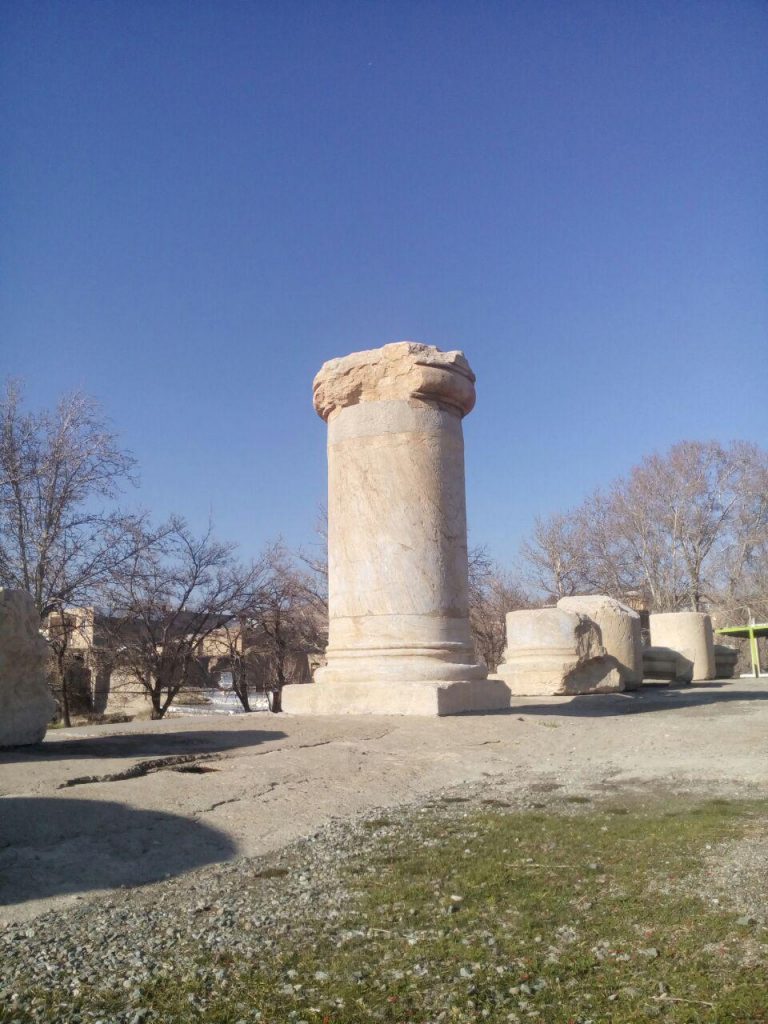
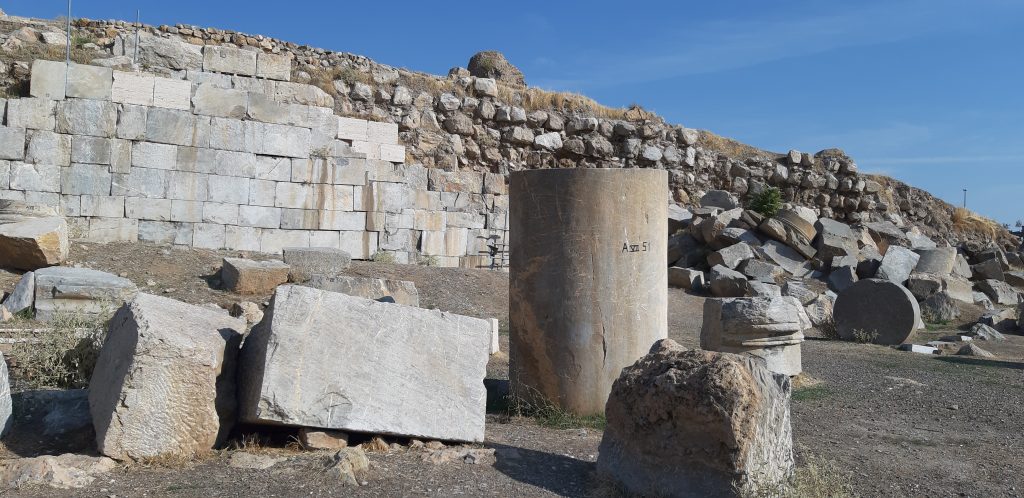
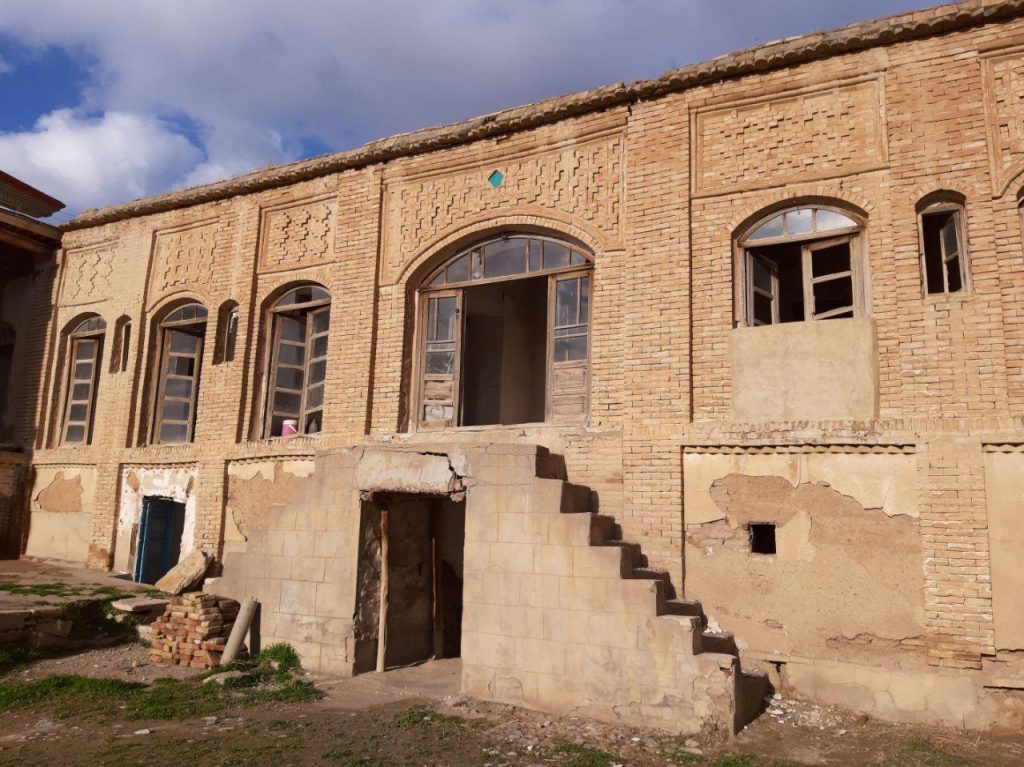
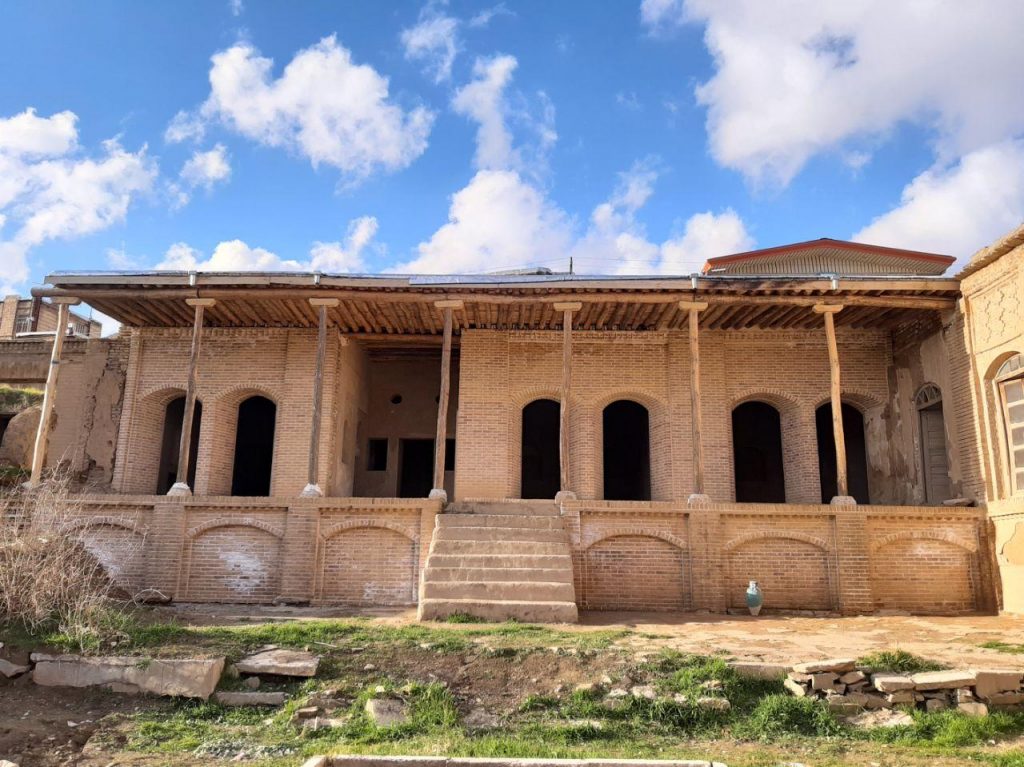
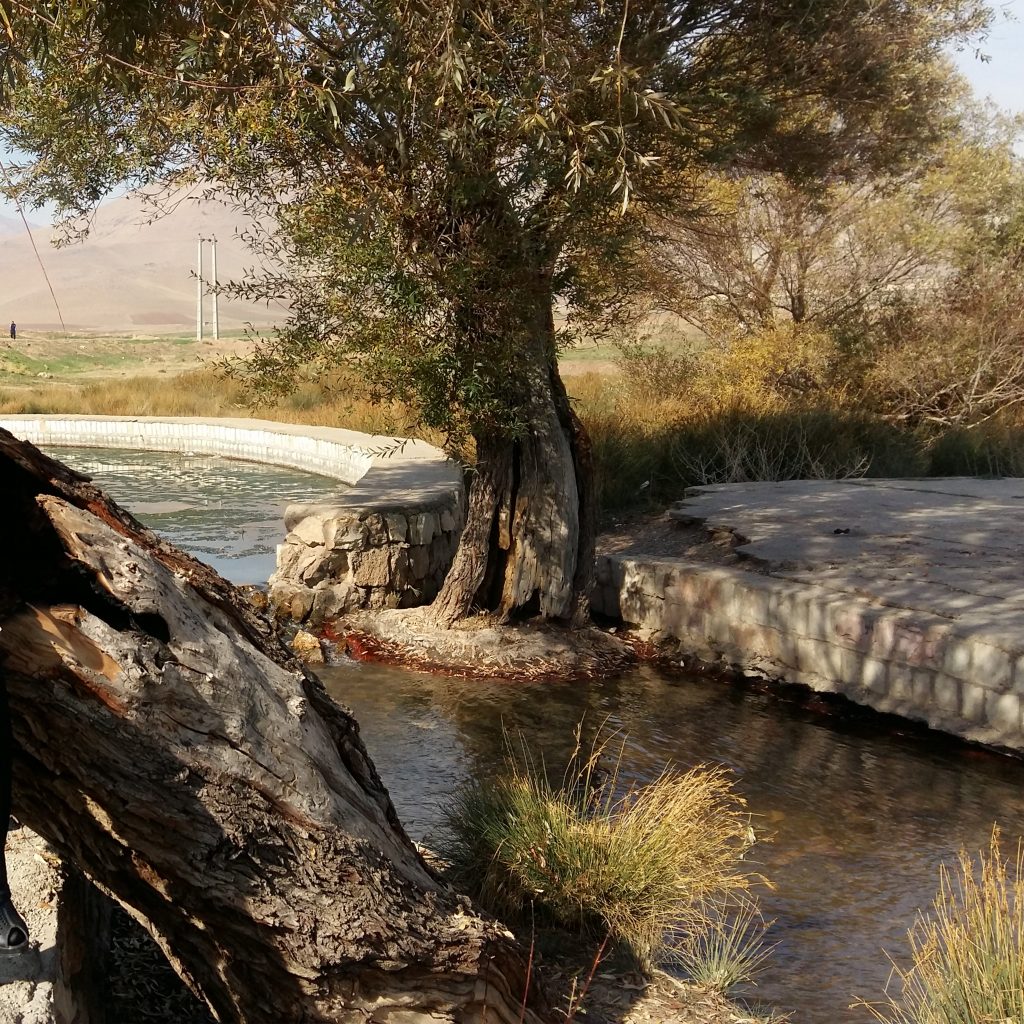
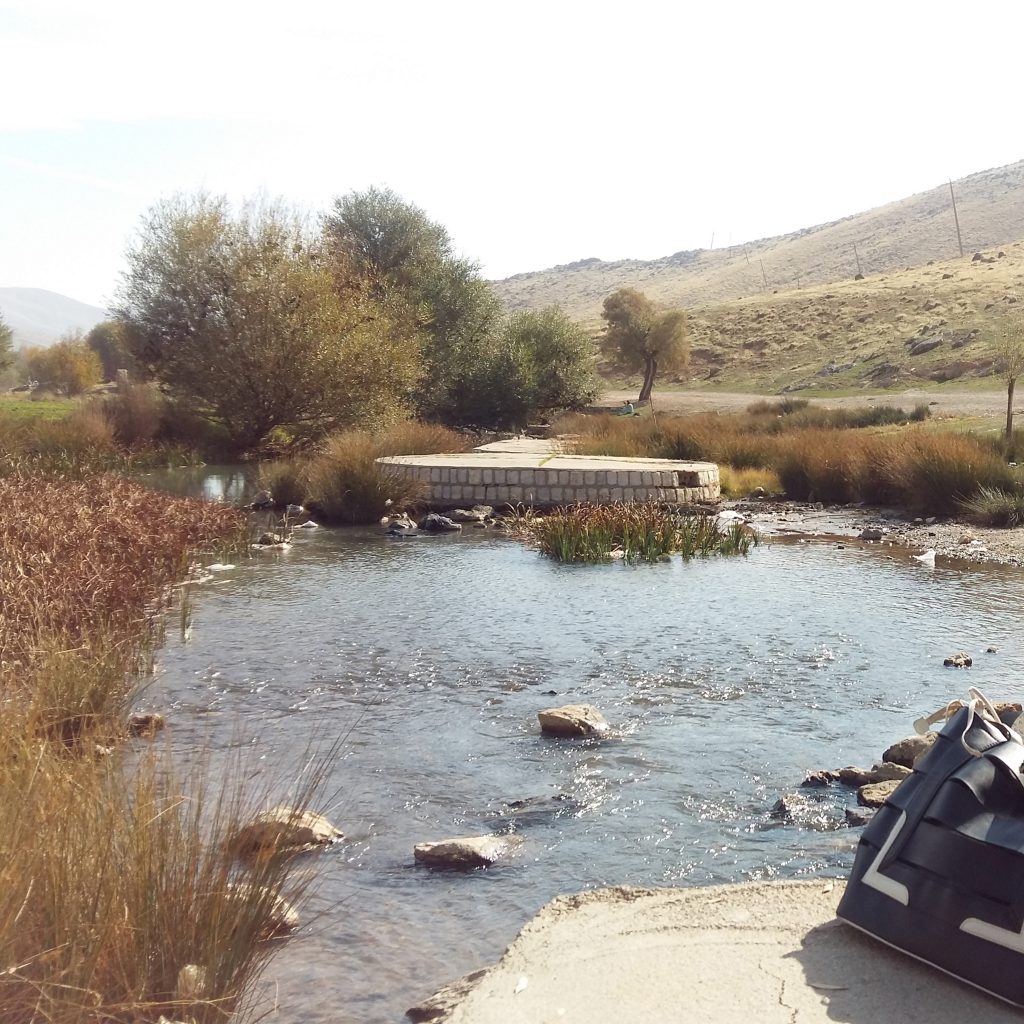
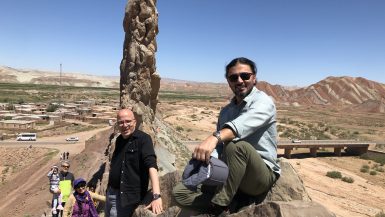

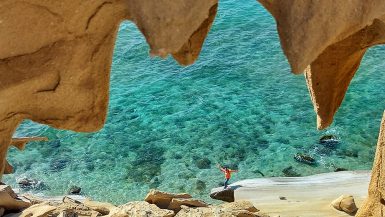
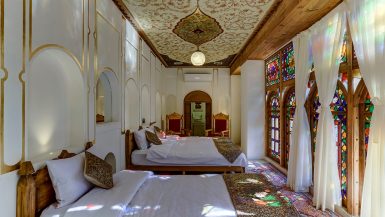
Leave a reply